The Regista: Fernandes in defence and Dalot inverted - Ten Hag rewarded for innovation
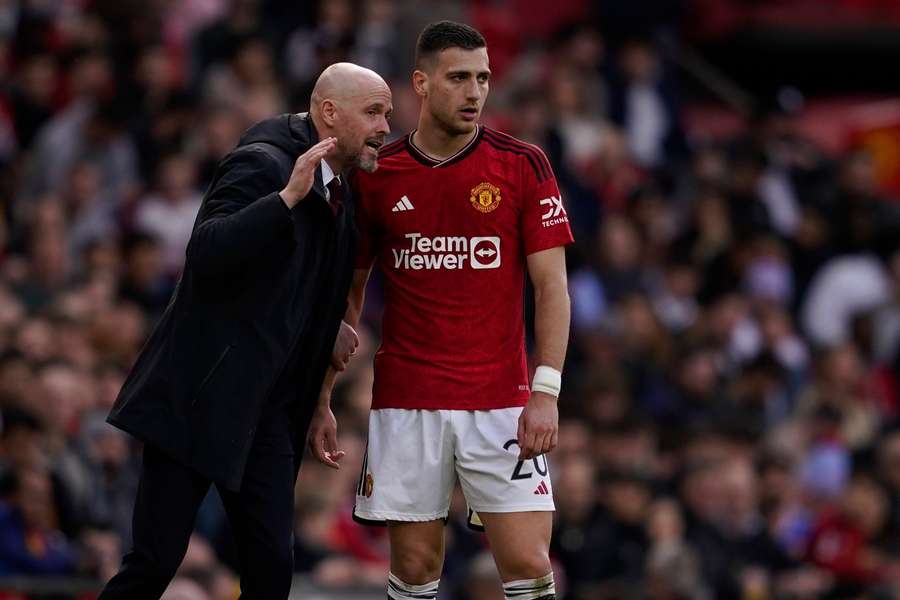
In an FA Cup all-time classic, we saw seven goals, new tactical innovations and a massive gap in the Manchester United midfield! But what stood out in this game, and how did Manchester United trump Liverpool?
Here are the two starting line-ups from the game, United starting in a 4-2-3-1, and Liverpool starting in their 4-3-3.
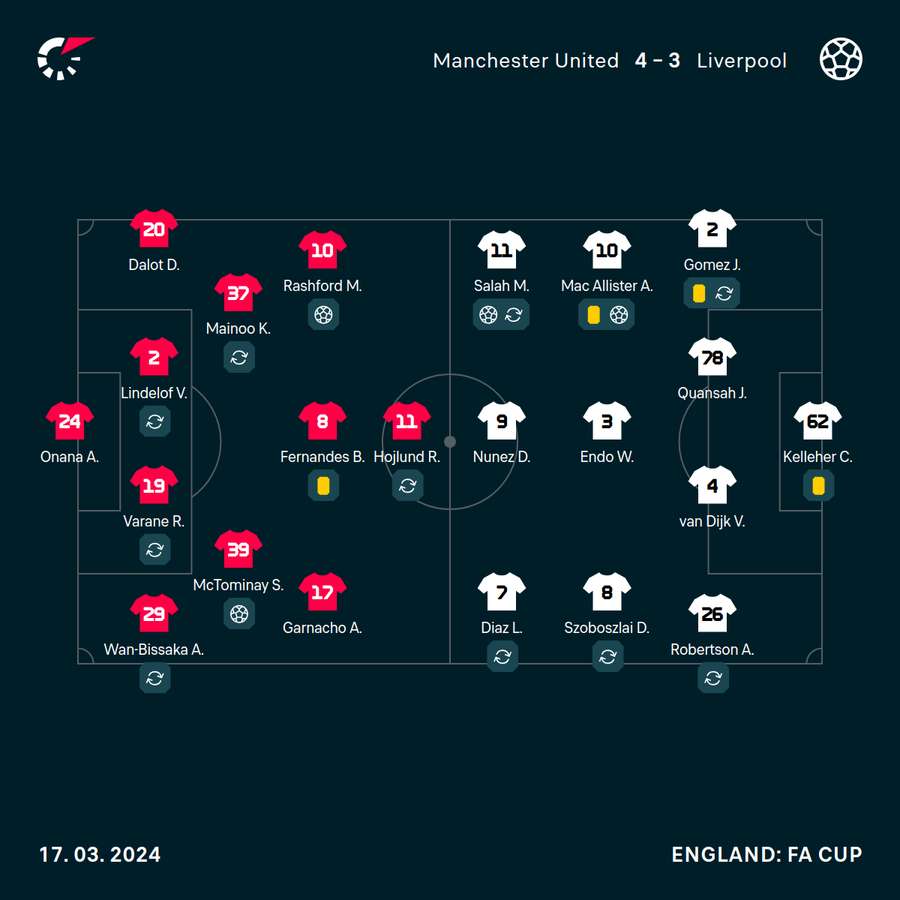
Dalot inverted - winning the midfield
Manchester United started with Aaron Wan-Bissaka at left back (to match up with Mohamed Salah), and Diogo Dalot at right back, who inverted into midfield.
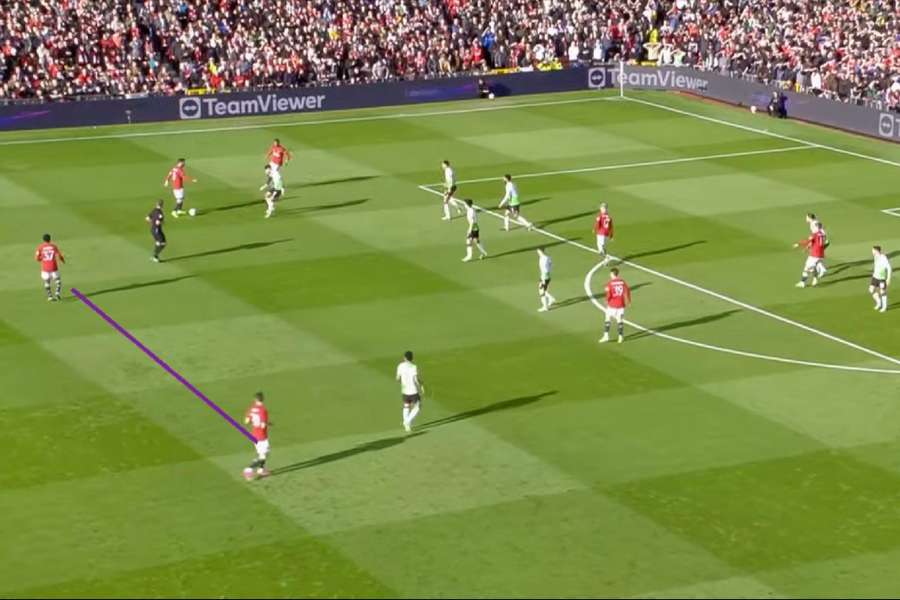
Dalot would invert in the first phase of build-up, allowing Scott McTominay to push higher up and be a nuisance between the lines with his physicality and vertical movement. This also then allowed United to have McTominay, Bruno Fernandes, Kobbie Mainoo and Dalot in a box midfield for counter-pressing purposes, and to win that midfield battle early on.
The image above shows the base of Dalot and Mainoo in position to recover the ball if it breaks; this allows McTominay to be higher up, and attack the box (leading to their opening goal).
In the first half before Liverpool's equaliser, here are the average positions for Manchester United.
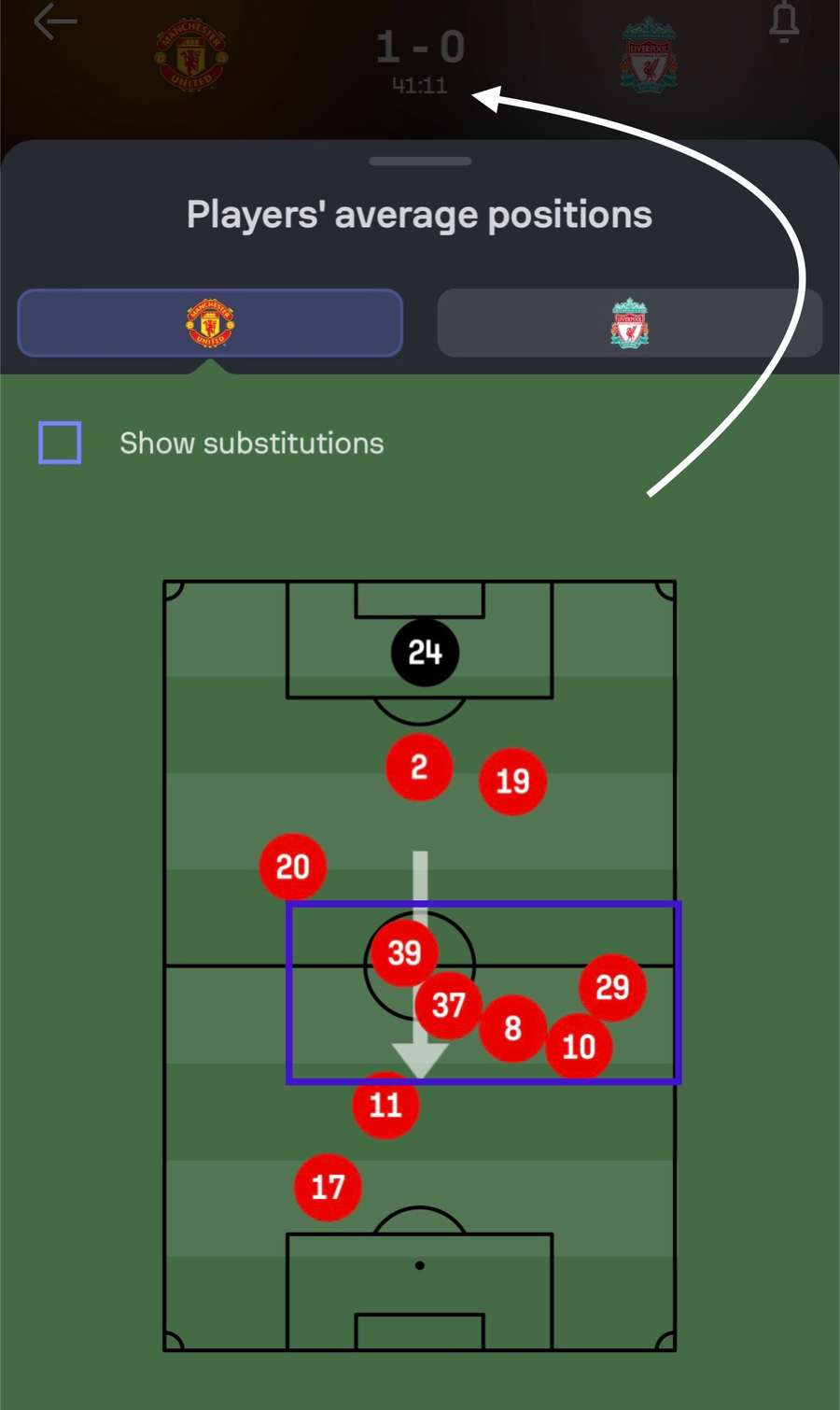
The midfielders were close together, making it hard for Liverpool to win the midfield battle (often being a 4v3 overload for United in this area) and stopping Liverpool's central progression.
The timing of when to jump and press (especially Mainoo for the first half hour) and the way United were setting central traps to win the ball back and break was excellent in that first 30 minutes.
However, towards the end of the half, it started to take its toll on the United midfield, who began to look a bit leggy.
This then meant when Mainoo jumped out to press, the rest of the midfield triggered their press, and due to tiring legs, Liverpool found themselves through the press and in acres of space, as the United defence wasn't pushed up with them.
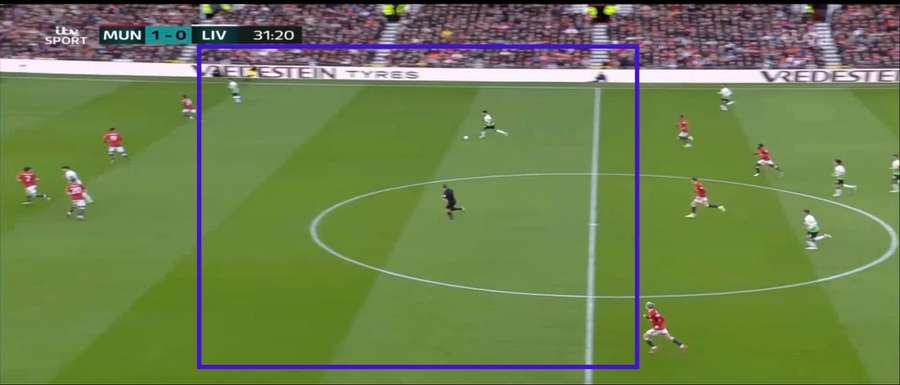
You can even see Dalot who is still inverted, way further back and he hadn't pushed up close enough to the midfield (looking leggy) to cover the space left once Mainoo and McTominay jumped to press.

Whilst this doesn't look bad, it does tell us the distances between players became wider in the second half, staying less compact and together as a unit in their pressure.
This allowed Liverpool to start finding gaps between the lines, and punish United, scoring two goals before half time, and having more chances on the break in the second half to finish the game.
Another key thing to mention defensively for United was Wan-Bissaka's role against Salah.
Early in the game, he was able to get tight to Salah, not allowing him any time to turn, keeping him facing his own goal and in the least threatening positions.
However as the half went on, and in the second half, Salah started to drag wider, either causing Wan-Bissaka to follow him man to man (leaving more space for a midfielder to arrive) or allowing him to receive the ball facing forwards.
Bruno Fernandes - CB?
Now let's touch on the one everyone is talking about: has Bruno Fernandes found a new position?
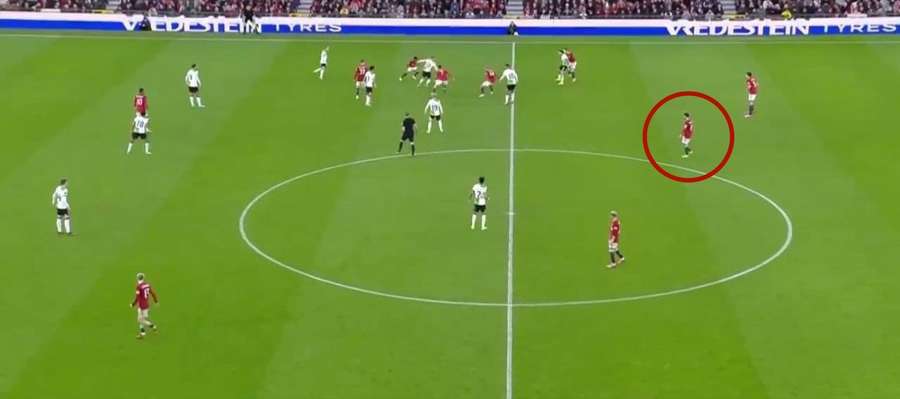
In short, the answer is no, but it's a fun concept to look at, and see how it affected the game!
As United looked for an equaliser in the second half, Ten Hag made the switch of Bruno Fernandes coming deep as basically a centre-back, and Harry Maguire playing upfront (in and around the box).
The Red Devils were looking to get the ball into Maguire and McTominay, use their physicality and get as many players around them to win the second ball, and this is where the equaliser came from.
McTominay receives the ball in the midfield, holds it up and a lucky deflection means the ball finds its way to Antony who puts it out to Garnacho. From this, Garnacho gets himself in a 1v1, attacks the box and the ball breaks for Antony who scores on the spin.
The idea with Bruno being further back is for him to have a higher percentage of possession, allowing him to be the one putting the balls into areas for Maguire and McTominay to attack. This means he is affecting the game more (from deep like a quarterback) and the more physical players are in and around the box to attack the ball.
It also allowed players with fresh legs (Antony, Amad Diallo and even Maguire) to counter-press more effectively, and it was actually from Amad Diallo winning the ball back that United got their third goal (in extra time).
Conclusion
To conclude this game, it was an all-time FA Cup classic that had it all. Late drama, goals galore, Bruno Fernandes as a centre-back and even Antony as a left-back at one point.
Credit has to be given to Erik ten Hag. Late in the game, he went for it, made attacking changes (leading to Bruno dropping deeper) and looked to flood the box, which worked and they found their equaliser.
He then stuck with it and looked to win the game, which ended up proving effective.
